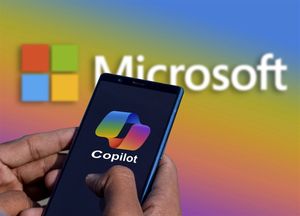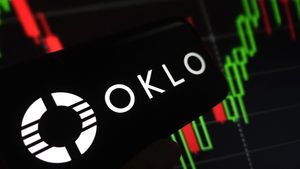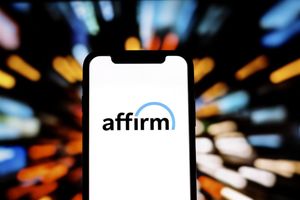New Technology Demonstrated in Multiple DOE National Lab Public-Private Partnership Will Strengthen U.S. Energy Security and Environmental Stewardship
Curio, a leader in advanced nuclear technologies, today announced the successful completion of groundbreaking laboratory-scale demonstrations in collaboration with four U.S. Department of Energy national laboratories – Idaho National Laboratory (INL), Oak Ridge National Laboratory (ORNL), Pacific Northwest National Laboratory (PNNL), and Sandia National Laboratories – supported by DOE’s ARPA-E CURIE program and GAIN voucher initiative.
Following more than half a century of outdated processes like PUREX and Argonne National Laboratory's pyro-processing, nuclear fuel recycling is entering a new chapter redefined by Curio's NuCycle® technology. Conceived in the private sector and built upon decades of American innovation, NuCycle is the first nuclear fuel recycling technology designed from the ground up with safeguards and proliferation-hardening integrated into its process to be tested and validated at the lab scale, heralding a new, commercially-driven era for the industry.
Curio’s multiple patents cover its fully integrated, safeguarded-by-design process for safely recycling the nation’s 90,000 metric tons – and growing – of used nuclear fuel and the design of a reactor that completes the closed fuel cycle, transforming this liability into new, proliferation-hardened fuel and valuable isotopes.
In partnership with Oak Ridge National Laboratory (ORNL), Curio successfully demonstrated its innovative voloxidation techniques, offering unprecedented efficiency and scalability in decladding spent nuclear fuel. These lab-scale tests released more than 99.75% of the fuel from its zircaloy cladding, providing major validation for a process poised to replace the more burdensome, costly, and less environmentally friendly methods currently used worldwide. Under DOE’s GAIN voucher program, ORNL completed criticality safety assessments of Curio’s next-generation equipment designs with no safety constraints identified.
The pulverized product from the decladding process was then shipped to Pacific Northwest National Laboratory (PNNL), where Curio's breakthrough fluorination circuit was validated. The process achieved decontamination levels of sub-parts-per-million levels for key contaminants that yielded enrichment-ready uranium hexafluoride (UF6) at some of the purest levels ever recorded from a single-stage process. Working with partners at PNNL, Curio successfully scaled this essential chemistry from milligram-level experiments to 100 grams – a 10,000-fold increase in capacity – proving both its viability and scalability. Eliminating the need for additional conversion and distillation steps, this achievement establishes a new critical pathway for domestically sourced UF6 for the U.S. market, and promises major cost savings for the nation’s reactor fleet.
At Idaho National Laboratory (INL), Curio acquired world-first data that enables its advanced electrolysis process. This foundational work, which spanned all actinides present in spent nuclear fuel, was conducted in a molten-salt bath. By systematically varying temperature and concentration, the teams were able to study the fundamental redox chemistry that will enable co-extraction of plutonium with uranium and minor actinides in a proliferation-hardened manner, providing crucial insights and validation for the future of comprehensive fuel recycling and its re-use.
The data from these foundational lab-scale experiments are now informing Curio's work with Sandia National Laboratories to develop a comprehensive safeguards and security model. This collaboration will conduct iterative material control and accounting (MC&A) analysis, using the experimental results to create the first-ever nuclear fuel recycling process that is safeguarded by design.
“We are moving at a pace the industry has never seen to deliver a fundamentally new, safeguarded-by-design platform that will redefine the economics and security of the entire nuclear fuel cycle. These unprecedented results demonstrate the strength of public–private collaboration in advancing sustainable nuclear solutions,” said Ed McGinnis, CEO of Curio.
Curio’s ARPA-E CURIE award, received in 2023, enabled side-by-side lab demonstrations of the complete NuCycle® flowsheet at INL, ORNL, and PNNL, which have now met key go/no-go milestones, delivering unprecedented insights into the process chemistry and kinetics.
Curio is leveraging these results to finalize engineering specifications for its pilot-scale NuCycle modules, targeting demonstration by Q4 2027. Curio intends to complete its lab-scale demonstration with actual spent nuclear fuel at INL, and is actively exploring a first pilot with the DOE.
Click here to see a longer, more detailed news release.
View source version on businesswire.com: https://www.businesswire.com/news/home/20250904145678/en/
For over half a century, nuclear recycling stalled with outdated technologies. Curio’s NuCycle®—a private-sector breakthrough validated by four DOE national labs—ushers in a new era of safeguards, proliferation barriers, and ultimate waste minimization
Contacts
Brian Hyland
press@curiolegacy.com
201-410-4563






